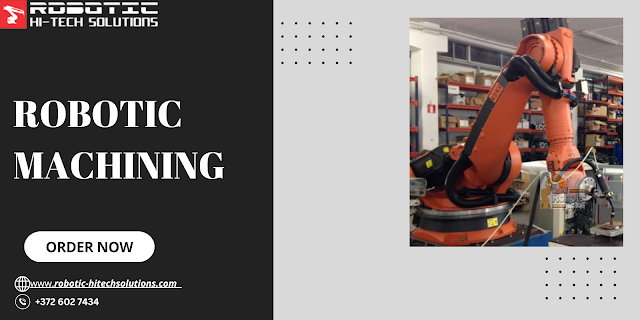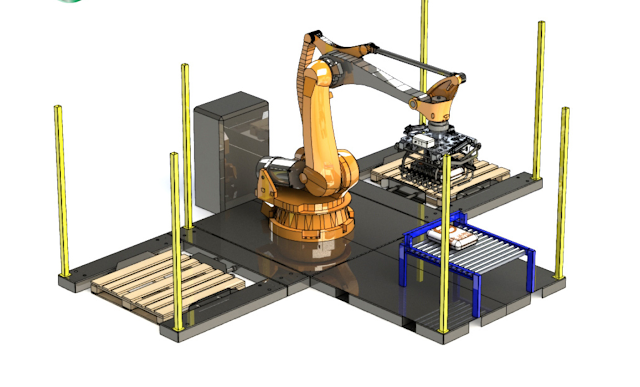How Robotic Machining Works to Improve Efficiency and Productivity?
In the ever-evolving landscape of manufacturing and production, staying competitive means finding innovative ways to enhance efficiency and productivity. Robotic machining has emerged as a transformative technology, revolutionizing how industries approach precision manufacturing and complex tasks. In this article, we will delve into the world of robotic machining, exploring its benefits, applications, and how it's driving the future of manufacturing.
The
Power of Robotic Machining
Robotic machining, also known as CNC
(Computer Numerical Control) machining with robots, involves the use of
automated systems equipped with robotic arms to perform machining operations.
These operations include milling, drilling, cutting, grinding, and more. Unlike
traditional CNC machines, which are typically stationary, robotic machining
offers unparalleled flexibility and adaptability.
Key
Benefits of Robotic Machining:
· Precision and Consistency: Robots excel
at maintaining precision and consistency in machining tasks, reducing errors
and ensuring high-quality output.
· Versatility: Robotic machining can be
programmed to handle a wide range of materials, from metals to composites, and
adapt to various part sizes and complexities.
· Efficiency: Robots work tirelessly
without breaks or fatigue, resulting in higher productivity levels and reduced
production time.
· Safety: By automating tasks that can be
hazardous to humans, such as working with heavy machinery or in extreme
temperatures, robotic machining enhances workplace safety.
· Cost-Effective: While the initial
investment in robotic machining can be significant, the long-term cost savings
through reduced labor and increased efficiency often justify the expense.
Applications
of Robotic Machining:
· Aerospace Industry: Robotic machining is
used extensively in the aerospace sector to produce complex and precision
components for aircraft and spacecraft. The ability to work with lightweight materials
like aluminum and titanium makes robots invaluable in this industry.
· Automotive Manufacturing: Robotic
machining is employed for tasks such as milling engine components, trimming
parts, and creating molds for automotive bodies. The automotive industry
benefits from the speed and accuracy of robotic machining.
· Medical Device Manufacturing: Precision
is paramount in medical device manufacturing. Robots are used to create
intricate components for devices like prosthetics, orthopedic implants, and
surgical instruments.
Mold and Die Making: The production of
molds and dies for injection molding and die-casting can be time-consuming and
labor-intensive. Robotic machining streamlines this process, allowing for
faster turnaround times.
Art and Sculpture: Even in the world of
art and sculpture, robotic machining has found a place. Artists can use robots
to carve intricate designs into various materials, pushing the boundaries of
creativity.
Enhancing
Productivity and Efficiency:
Robotic machining offers several ways to
enhance productivity and efficiency in manufacturing:
24/7 Production: Robots don't need rest,
which means continuous production without downtime, leading to faster project
completion.
Reduced Scrap: Precision and consistency
minimize errors, reducing the number of flawed parts and materials wasted
during production.
· Programming Flexibility: Robots can be
reprogrammed swiftly to adapt to new tasks or product variations, reducing the
need for extensive retooling.
· Data-Driven Optimization: Robotic systems
can be equipped with sensors and monitoring tools that collect real-time data,
allowing for process optimization and predictive maintenance.
· Human-Robot Collaboration: While some
tasks are entirely automated, collaborative robots (cobots) can work alongside
human operators, leveraging the strengths of both to maximize productivity.
Conclusion:


Comments
Post a Comment